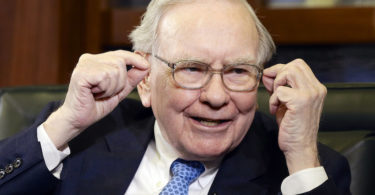Introduction
Comerica Incorporated (NYSE: CMA) is a Dallas-based regional bank with roots dating back to 1849. It operates primarily in Texas, California, Michigan, Arizona, and Florida ([1]), focusing on middle-market commercial banking. As of October 2025, Comerica is at the center of a major bank merger: Fifth Third Bancorp (FITB) has agreed to acquire Comerica in an all-stock deal valued around $10.9 billion ([2]). This transformative merger will form the 9th-largest U.S. bank with ~$288 billion in assets ([2]). Fifth Third will issue 1.8663 shares per Comerica share, implying a purchase price of ~$82.88 (about a 20% premium to Comerica’s prior 10-day average) ([2]). The transaction, initiated by a call from Comerica’s CEO Curt Farmer, reflects management’s strategic view that combining franchises will enhance scale and growth opportunities ([3]). Fifth Third’s CEO Tim Spence noted the pro-business regulatory environment has helped streamline approvals, and both parties expect to close the deal by Q1 2026 ([4]) ([2]). Below, we dive into Comerica’s fundamentals – from its dividend policy to leverage, valuation, and risk factors – to provide a nuanced picture of the company as it heads into this merger.
Dividend Policy & Yield
Comerica has a long history of returning capital to shareholders via dividends. The current quarterly dividend is $0.71 per share (declared for Q4 2024), equating to $2.84 per share annually ([5]). This represents a dividend yield of ~3.5% at recent share prices ([1]). Notably, Comerica maintained its dividend through recent banking-sector turmoil – a sign of confidence. In fact, management characterized the dividend as “compelling” in size while still preserving strong capital levels ([6]). The payout ratio stands around 50-55% of earnings (e.g. in Q2 2025, EPS was $1.42 vs. a $0.71 dividend) ([6]) ([1]). This moderate payout suggests solid coverage, leaving room to absorb earnings fluctuations. Comerica’s board has also authorized share buybacks – in late 2024 it boosted its repurchase program ([5]) – indicating excess capital beyond the dividend.
AFFO/FFO Consideration: For traditional banks like Comerica, AFFO/FFO metrics are not applicable, as those are used mostly for REIT cash flows. Instead, dividend sustainability is gauged by the earnings payout ratio and capital ratios. By those measures, Comerica’s dividend has been well-covered by net income and supported by prudent capital management. With the pending merger, a key question is how Comerica’s dividend policy will translate under Fifth Third’s framework. (Notably, Fifth Third has a similar dividend growth record – it hiked its quarterly payout to $0.40 in late 2025 ([7]), implying a yield on par with Comerica’s ~3.5-4%. This alignment suggests Comerica shareholders may enjoy continuity in dividend income post-merger.)
Leverage, Capital & Debt Maturities
Capital Position: Comerica entered the merger from a position of conservative balance-sheet strength. As of Q2 2025, its Common Equity Tier 1 (CET1) capital ratio stood at ~11.9% ([6]) ([6]), comfortably above regulatory minimums. This healthy cushion reflects management’s “proven legacy of conservative capital… and liquidity management” ([8]). In fact, Comerica has been operating with capital well above its 10% CET1 internal target ([8]). The strong capital base provides assurance that Comerica can withstand economic stress and also meet upcoming tougher capital rules proposed for mid-sized banks.
Leverage & Funding: With approximately ~$90 billion in assets (pre-merger), Comerica is moderately leveraged for a bank of its size. The asset-to-equity leverage is roughly 14× (common equity ~$6.3B vs. assets ~$85-90B), which is typical for regional banks. Critically, deposit funding is the primary liability: total deposits were about $60 billion at mid-2025 ([6]) ([8]), while wholesale debt was much smaller. Comerica’s medium- and long-term debt outstanding was ~$5.7 billion as of Q2 2025, down from $7.1 billion a year earlier ([6]). This indicates the bank repaid or retired debt as funding stabilized, reducing reliance on pricier wholesale funds. (For example, Comerica issued $1 billion of 5.98% senior notes due 2030 in Jan 2024 ([9]) – bolstering liquidity after the 2023 turmoil – but has since let other borrowings roll off.) Short-term borrowings have ticked up modestly to fund loan growth, but overall wholesale funding remains a small slice of the balance sheet ([6]) ([6]).
In terms of debt maturities, Comerica’s remaining long-term notes are staggered over coming years, and the bank’s high-quality credit profile has allowed refinancing at reasonable costs. The successful $1B debt issuance in early 2024 (at ~6%) exemplifies capital markets’ confidence ([9]). With the merger, Comerica will join forces with Fifth Third’s funding base, which should further enhance the combined entity’s liquidity profile and potentially lower its cost of funds through scale.
Earnings Strength & Coverage Ratios
Profitability: Comerica’s earnings have been solid, though not industry-leading, in the recent environment. In Q2 2025, net income was $199 million (EPS $1.42), up 16% quarter-on-quarter ([6]) ([6]). Return on Equity (ROE) ran about 11–12% in 1H 2025 ([6]). Comerica’s net interest margin (NIM) hovered around 3.1% ([6]) – healthy, though facing pressure from rising deposit costs. Noninterest income provides additional diversification (about $274M in Q2, thanks to wealth management, card fees, etc. ([6])). Notably, credit quality has remained a bright spot: net charge-offs were just 0.22% of loans (low end of normal range) and the reserve (allowance for credit losses) was ~1.44% of loans ([6]) ([6]), indicating prudent coverage for potential losses.
Dividend & Interest Coverage: As mentioned, Comerica’s dividend payout ratio (~50%) implies earnings cover the dividend about 2× over – a comfortable margin ([6]). Even during periods of earnings stress, the bank’s dividend has been maintained, underscoring confidence in forward earnings. From an interest coverage standpoint, traditional metrics (EBIT/interest) are less relevant for banks. However, it’s worth noting that Comerica’s pre-tax income plus interest expense on debt provides a healthy coverage of its debt costs. For instance, in Q2 2025, interest on medium/long-term debt was ~$85M ([6]), which was well-supported by net operating profit. Moreover, because 70+% of Comerica’s funding comes from deposits, which are costed through NIM, the bank’s business model inherently bakes in coverage of interest costs via net interest income. Bottom line: current earnings readily cover both interest obligations and shareholder dividends, with some buffer to spare.
Valuation and Comparables
Prior to the merger announcement, Comerica’s valuation reflected investor caution toward regional banks. At around $80 per share, CMA traded at roughly 15× trailing earnings ([10]) ([10]) and about 1.6× tangible book value. The Fifth Third deal effectively values Comerica at ~1.75× tangible book ([11]), equating to $82.88 per share as noted. This pricing is reasonable and even somewhat lower than recent bank M&A multiples, which often exceeded 2× book for healthier franchises. It likely reflects Comerica’s mid-tier ROE (averaging low double-digits) and the fact that Fifth Third did not have to overpay in the current environment ([11]). In fact, analysts have praised the merger’s financial sensibility: Fifth Third is paying a valuation that is accretive with no dilution of its own tangible book value ([3]), thanks to significant cost synergies. Fifth Third projects $850 million in annual expense savings, with synergies valued at $5 billion (NPV) after $1.3B in one-time costs ([11]). This means the deal is expected to boost the combined bank’s efficiency and returns, justifying the premium.
Comparables: Among peer regional banks (major regionals like KeyCorp, Zions, etc.), Comerica’s dividend yield (~3.5-4%) was on the higher side – a sign that its stock had lagged and was perceived as higher risk earlier in 2023. Its P/E in the 10–12× range (before the recent run-up) was also relatively low, reflecting investor wariness after the spring 2023 banking mini-crisis. The merger news propelled CMA shares upward (they’ve surged ~32% year-to-date in 2025, versus ~5% for Fifth Third’s stock) ([3]). Even so, at the deal price the valuation appears fair rather than frothy. The combined entity will have a pro forma market cap around $25–30B, and if synergies materialize, could command a higher earnings multiple more in line with large regional banks. For now, CMA’s valuation is essentially locked to Fifth Third’s stock price via the exchange ratio; any arb discount (deal spread) has been minimal given confidence that the deal will close on schedule.
Key Risks
Macro & Interest Rate Risk: Like all banks, Comerica faces interest-rate and economic cycle risks. A significant economic downturn could hurt its loan portfolio credit quality and stall its earnings. Thus far, credit metrics have been strong, but persistent inflation or a recession in 2026 could change that. Additionally, interest rate movements pose a risk to net interest margins. Comerica benefited from rate hikes with a strong NIM, but as the Fed shifts to cutting rates (as began in late 2024), asset yields could fall faster than deposit costs, compressing the margin. Management noted that a “downward shift in the rate curve” was already impacting results in early 2025 ([8]). The bank has to carefully manage deposit pricing – 59% of deposits are interest-bearing and competition for deposits remains high ([8]) ([8]). If deposit betas (rate paid) remain elevated even as loan yields drop, profitability could be squeezed.
Deposit Stability: The 2023 regional banking crisis highlighted the risk of rapid deposit outflows. Comerica experienced some deposit flight in that period, given its relatively high percentage of uninsured deposits (roughly 45-50% of deposits were above FDIC insurance limits) ([8]). The bank responded by increasing insured balances (noninterest-bearing deposits now a solid 38% of total) ([8]) and raising liquidity. While outflows have abated – average deposits were $61.2B in Q2 2025, down only modestly from $63B a year prior ([6]) – any resurgence of panic or bank-specific concern could renew liquidity pressure. Comerica has prepared with significant on-balance sheet liquidity (e.g. ~$4–5B parked at the Fed) and access to borrowing lines ([8]). Still, deposit retention remains a core watch item, especially during the merger integration when competitors may try to poach clients.
Credit Exposure – CRE and Middle-Market Loans: Comerica’s portfolio is concentrated in commercial loans (over $50B) across various industries ([6]). One area drawing scrutiny is Commercial Real Estate (CRE), particularly office building loans. Industry-wide, deteriorating office asset values have led to rising non-performing loans at many regional banks ([12]). While Comerica has not been highlighted as an outlier, it is certainly exposed to CRE cycle risk given its meaningful presence in commercial lending. A wave of office loan defaults or a “maturity wall” of CRE loans that can’t refinance could drive credit losses ([12]). Beyond CRE, Comerica’s traditional focus on middle-market businesses (including segments like manufacturing, energy, tech, and environmental services) means a broad economic slowdown could increase defaults. Thus far credit quality is excellent – net charge-offs only 0.22% and reserves 1.44% of loans ([6]) – but low charge-offs are likely at a cyclical trough. Investors should monitor any uptick in early delinquencies or watchlist loans as a signal of trouble ahead.
Regulatory and Legal: Regulatory compliance is another dimension of risk. In December 2024, the Consumer Financial Protection Bureau sued Comerica over allegations it failed customers (many disabled or elderly) in its handling of Direct Express prepaid benefits cards ([13]). These allegations (e.g. disconnected customer service calls for millions of cardholders) posed reputational damage. By April 2025, however, the CFPB dismissed its lawsuit amid shifting priorities ([14]). While Comerica avoided penalties in that case, the episode was a red flag on operational controls in a niche program. Additionally, Comerica has been transitioning the Direct Express program to a new provider ([2]), and losing that contract could mean a loss of low-cost deposits and fee revenue. More broadly, as Comerica surpasses $100B in assets (pro forma with Fifth Third), it will face heightened regulatory scrutiny – including stricter capital and resolution planning requirements – which could add compliance costs and constrain certain activities. Regulatory approval risk for the Fifth Third merger itself appears low (the environment is favorable ([3])), but any surprise hurdles or delays would be a risk factor to closing.
Red Flags and Watch Items
Beyond the broad risks above, a few specific red flags are worth noting:
– Unrealized Bond Losses: Like many banks, Comerica amassed significant unrealized losses on its bond portfolio when interest rates spiked. As of Q2 2025, it still had ~$2.4 billion in unrealized losses on securities (mostly held-to-maturity) ([6]). Management took action in late 2024 by selling some underwater securities (incurring a one-time loss) to “reposition” the portfolio ([8]), which improved the capital picture. Nevertheless, if interest rates were to rise again or if Comerica had to sell bonds unexpectedly, these paper losses could become real charges. The recent moderation in rates has reduced this risk, but it remains a balance-sheet vulnerability to watch.
– Reputation and Customer Service Issues: The CFPB allegations pointed to deficiencies in Comerica’s customer service infrastructure for a vulnerable customer segment. Even though the lawsuit was dropped, the underlying issue – potentially inadequate oversight of third-party vendors or call centers – is a red flag. Management will need to ensure smoother execution as they transition Direct Express and integrate with Fifth Third’s systems. Any customer attrition or backlash from these changes would be concerning.
– Insider Trading or Shareholder Actions: There haven’t been notable insider trading controversies at Comerica in recent history. Insider ownership is fairly typical, and no activists were publicly agitating for a sale, though the merger itself might have headed off future activist pressure. One constructive “insider” signal was management’s continued share buybacks in 2023-2024 – demonstrating they believed the stock was undervalued ([5]). Investors should still keep an eye on unusual insider stock transactions as the merger closing approaches (such as large executive stock sales or golden parachute arrangements) that could indicate insiders’ views on valuation. So far, nothing out of the ordinary has emerged.
– Merger Integration Execution: It’s early, but how Fifth Third and Comerica manage the integration will be crucial. Integration risk isn’t exactly a red flag yet – but any signs of cultural clash, technology integration hiccups, or key talent departures from Comerica’s ranks would raise concerns. Fifth Third has promised a combined company with “peer-leading efficiency” ([2]) and $850M in cost saves ([11]); achieving this will likely mean branch consolidations and layoffs. Stakeholders should watch for any customer or employee fallout during this process that could jeopardize the anticipated benefits.
Valuation Upside vs. Risks – Final Take
In summary, Comerica presents a case of a solid regional bank that navigated recent headwinds and found a strategic exit through an accretive merger. Its dividend yield (~3.5-4%) and buybacks have rewarded shareholders while maintaining prudent capital buffers ([6]) ([1]). Leverage is well-managed, with capital ratios near 12% and ample liquidity to weather shocks ([6]) ([6]). The bank’s valuation at deal price (1.75× book) is reasonable, and the tie-up with Fifth Third promises enhanced scale in growth markets and operational synergies ([2]) ([11]). However, investors should weigh ongoing risks: the economic cycle could pressure Comerica’s middle-market loan book, and any snag in merger execution could stall the stock’s recent gains. Regulatory changes are on the horizon as the combined bank enters a higher supervisory tier. No major red flags are flashing in terms of current performance – credit quality is strong and deposits have stabilized – but vigilance is warranted regarding CRE exposures, interest rate sensitivity, and any integration missteps.
Overall, the “FIS” deal (Fifth Third acquisition) appears on track, with both boards and (seemingly) regulators supportive. For Comerica shareholders, the merger offers an opportunity to ride the upside of a larger franchise with more diversified revenue (Fifth Third brings strengths in retail banking, payments, and wealth management ([2])). Yet, some open questions linger, as outlined below, which are worth following in the coming quarters.
Open Questions for Investors
– Post-Merger Dividend Policy: Will the combined Fifth Third–Comerica maintain the same dividend per share trajectory? Fifth Third has raised its dividend for 10 straight years (now $0.40/quarter) ([7]). How will Comerica shareholders (receiving 1.8663 FITB shares each) fare in terms of yield and payout continuity? Clarity on the new company’s dividend strategy will be important for income-focused investors.
– Integration of Operations: How smoothly can Fifth Third integrate Comerica’s operations, technology platforms, and corporate culture? Comerica’s strength is commercial lending in Texas/California, while Fifth Third is known for retail/digital prowess ([2]). Successfully blending these without disrupting customers is a big task. Any guidance on branch closings, core system conversions, and cost-cutting measures (and their timeline) will be telling.
– Retention of Key Clients and Talent: Will Comerica’s key relationship managers and clients stick with the new bank? Mergers risk competitor poaching. Fifth Third has already indicated Comerica’s chief banking officer will head wealth management in the combined company ([4]), signaling some retention of talent. Still, investors should watch for any loss of major client accounts or departures of high-level personnel during the transition.
– Credit Outlook: As we head into 2026, how will Comerica’s credit metrics evolve, especially in sensitive portfolios like office CRE, tech startup banking (a niche Comerica serves in Silicon Valley), and energy lending? Management’s commentary on loan pipelines, deferral programs, or credit provisions in coming quarters will shed light on whether any storm clouds are forming.
– Regulatory Capital Impact: What capital actions might be needed once combined? The merger will push assets near $300B, likely triggering enhanced regulatory standards. Will the new Fifth Third (post-merger) need to raise capital or slow buybacks to meet higher capital ratio requirements under Basel Endgame rules? Any hints from regulators or management on this issue will be key to understanding future capital returns.
In conclusion, Comerica’s stock story is evolving from a standalone turnaround play into a merger-arbitrage and integration story. The fundamentals discussed – steady dividend, strong capital, manageable leverage, and identifiable risks – provide context as shareholders await the “insider insights” of execution in the coming months. With the Fifth Third deal on track, investors will be keenly watching how these two banks deliver on their promise of a “better together” franchise ([2]) while safeguarding the value that has been created. The coming quarters will answer these open questions and determine whether the bold bet to merge pays off in sustained shareholder returns.
___
Sources: Comerica Investor Relations, SEC filings, and reputable financial media. Key information was drawn from Comerica’s quarterly results and press releases ([6]) ([5]), the Fifth Third–Comerica merger announcement ([2]), and analysis by Reuters ([3]) ([11]), among other cited sources above. All facts and figures are as of the latest available reporting (Q2 2025 for financials) and the October 2025 merger news.
Sources
- https://macrotrends.net/stocks/charts/CMA/comerica/dividend-yield-history
- https://ir.53.com/news/news-details/2025/Fifth-Third-to-Acquire-Comerica/default.aspx
- https://reuters.com/world/fifth-third-ceo-says-comerica-deal-will-expand-presence-us-middle-markets-growth-2025-10-07/
- https://reuters.com/business/finance/fifth-third-buy-comerica-109-billion-deal-2025-10-06/
- https://investor.comerica.com/2024-11-05-Comerica-Declares-Dividends-and-Announces-Increase-in-Share-Repurchase-Authorization
- https://sec.gov/Archives/edgar/data/28412/000002841225000180/a2025q2pressrelease-ex991.htm
- https://ir.53.com/news/news-details/2025/Fifth-Third-Bancorp-Increases-Quarterly-Cash-Dividend-on-its-Common-Shares-3-cents-or-8-to-0-40-per-Share/default.aspx
- https://cdn.yahoofinance.com/prod/sec-filings/0000028412/000002841225000149/a2025q1pressrelease-ex991.htm
- https://sec.gov/Archives/edgar/data/28412/000119312524017828/d115682d424b5.htm
- https://macrotrends.net/stocks/charts/CMA/comerica/pe-ratio
- https://reuters.com/legal/transactional/bankers-finally-get-deal-math-add-up-2025-10-06/
- https://reuters.com/markets/us/deteriorating-office-loans-stress-us-regional-banks-cre-portfolios-2024-10-29/
- https://reuters.com/legal/cfpb-sues-comerica-bank-over-allegations-failing-disabled-older-americans-2024-12-06/
- https://reuters.com/business/finance/us-consumer-bureau-dismisses-case-against-comerica-bank-filing-says-2025-04-11/
For informational purposes only; not investment advice.






